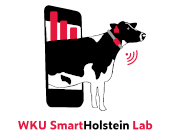| |
Use of the TPI Formula will lead to:
- Additional pounds of Fat and Protein, with slightly more gain in Butterfat.
- Body Weight of the next generation of cows should be consistent with the current population.
- Greater feed efficiency through improved production, controlling maintenance costs, and better feed conversion.
- An added benefit of the better control of the size of our cattle is a lowering of the incidence of difficult births, with a slight improvement in the daughter's ability to deliver a live calf.
- Higher economic returns by lowering the incidence of on-farm deaths and improving the productive period of months-in-milk.
- Conformation of our cattle will continue to improve from genetic improvement of overall conformation (PTAT), udders and feet & legs.
- Dairy farmers using the TPI formula will be breeding a more profitable herd of cattle.
OTHER COMPOSITE INDEXES
Feed Efficiency $ index reflects good feed utilization. It includes better utilization of the feed to produce extra pounds of milk, fat, and protein; feed saved from cows with a lower body weight and less maintenance costs; and feed saved from better feed conversion. This last part is known as residual feed intake (RFI), i.e., the difference in efficiency that we see between cows after accounting for the feed that goes into the maintenance of the cow and the production of milk.
Production $ + Body Weight Composite $ + Residual Feed Intake $
FE$ is calculated as follows:
FE$ = (-$0.0025 x PTA Milk) + ($1.86 x PTA Fat) + ($1.75 x PTA Protein) + ($0.13 x Feed Saved)
The first three components of this formula reflect the extra profit coming from cows producing more pounds of milk, fat, and protein. That is the additional feed costs, required to produce an extra pound of milk, fat, and protein, have been subtracted from the income that farmers receive for their milk. Component prices, reflecting primarily a cheese market, were updated in 2021. The trait Feed Saved is calculated by CDCB as a combination of HAUSA’s Body Weight Composite and CDCB’s RFI data which is based upon dry matter intake. Every pound of feed saved returns a net profit of eleven cents per cow per lactation. Economic values are based upon research from USDA-AGIL and a multi-state research program for the improvement of feed efficiency.
The Fertility Index combines several reproductive components into one overall index: ability to conceive as a maiden heifer, ability to conceive as a lactating cow, and a cow's overall ability to start cycling again, show heat, conceive, and maintain a pregnancy. The Fertility Index is derived from the formula:
FI = (.4 x DPR) + (.4 x CCR) + (.1 x HCR) + (.1 x EFC)
Daughter Pregnancy Rate, Cow Conception Rate, Heifer Conception Rate and Early First Calving
Breeding cows based on the updated TPI formula results in more profit, efficiency, and fertility. It improves dairy producers' bottom lines today, while the genetic superiority expressed by these cows will be passed on to the next generation.
The Health Trait Index combines the following health traits, developed by the Council on Dairy Cattle Breeding, into one economic value. The traits included are Milk Fever, Displaced Abomasum, Ketosis, Mastitis, Metritis and Retained Placenta. Higher values are more desirable.
HT = (.34 x MFV) + (1.97 x DAB) + (.28 x KET) + (1.50 x MAS) + (1.12 x MET) + (.68 x RPL)
|




